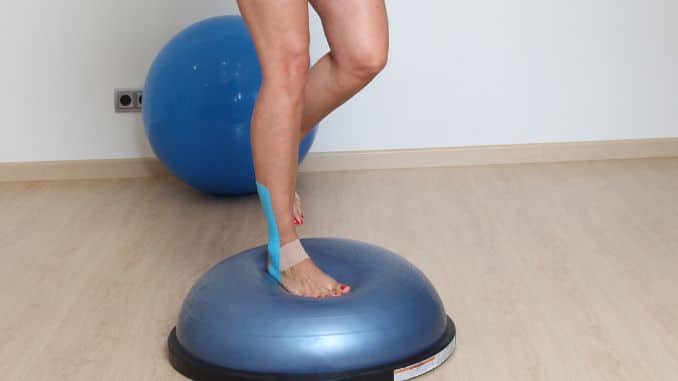
As people age, their ability to maintain balance can decline, increasing the risk of falls and injuries.
That’s why it’s essential to understand how to improve balance with eyes closed—a technique that activates deeper stability systems in your body.
Good balance is crucial for preventing falls and maintaining independence, especially in older adults.
Balance is crucial for everyday activities like walking, standing, and posture. Closing your eyes challenges your body’s balance since it relies less on vision and more on the inner ear and proprioception to stay steady.
Improving balance helps prevent falls, enhances coordination, and supports better posture, leading to overall health and performance benefits.
The Science Behind Balance
The body maintains balance through three main systems:
- Visual System: Your eyes provide important cues about your surroundings and help keep you balanced.
- Vestibular System: Located in the inner ear, it detects head position and movement, helping to stabilize the body.
- Proprioception: This is your body’s awareness of its position in space, detected through joints, muscles, and skin.
Why Closing Your Eyes Challenges Balance?
When you close your eyes, your body compensates for the loss of visual input by increasing reliance on the vestibular system and proprioception. This shift challenges your balance and makes it harder to stay steady. Practicing balance without vision strengthens these systems, improving your overall stability and coordination. This makes it important to learn how to improve balance with eyes closed regularly and safely, especially for older adults or those recovering from injury.
Key Factors for Improving and Maintaining Good Balance
- Strength and Muscle Tone: Strong legs and core muscles improve balance and stability.
- Coordination: Good coordination helps the body move smoothly and maintain balance.
- Posture: Standing straight keeps the body balanced and prevents falling.
- Proprioception: Awareness of body position in space helps maintain stability.
- Flexibility: Flexible muscles help adjust better and improve balance and control.
- Sensory Input: Eyes, ears, and touch help the body stay balanced.
- Footwear: Supportive footwear with non-slip soles improves stability, especially for older individuals.
- Balance exercises: Help improve stability and coordination over time.
Balance Exercises
Strengthening exercises, such as leg lifts and squats, target key muscle groups necessary for maintaining balance. Many of these movements are ideal when learning how to improve balance with eyes closed, as they help train your body to rely on proprioception.
As advised by Doctor Jo, balance exercises should be started slowly with a focus on stability.
Note: While performing these balance exercises, try to keep your eyes closed only if you are in a safe environment and have support nearby. This will challenge your balance more effectively by relying on your body’s vestibular system and proprioception, helping to improve your stability and coordination over time. Make sure you have a safe environment and use support if needed to prevent falls.
1. Vrksasana (Tree Pose)
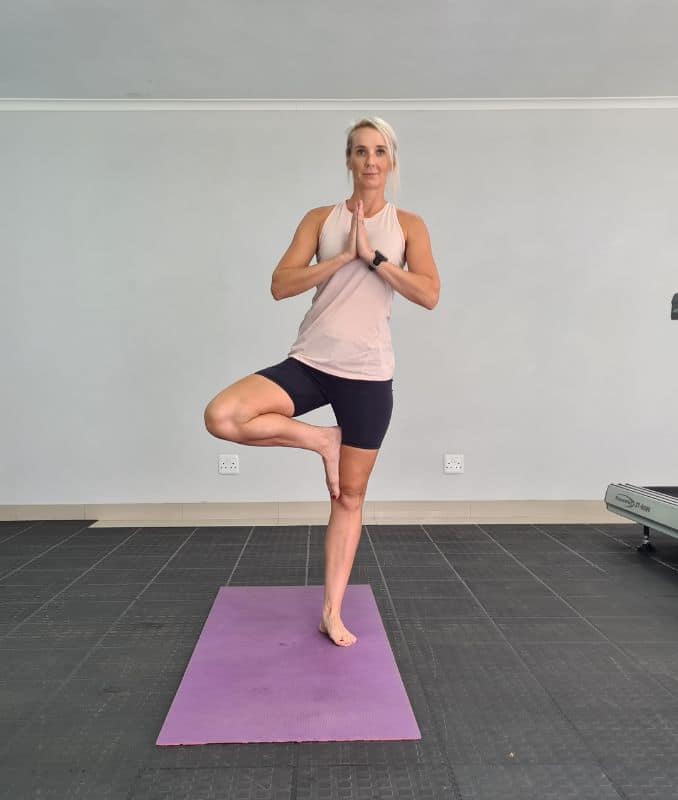
For this exercise, you can stand by the wall or place one hand on the wall for balance if needed.
- Begin this Fall Prevention Yoga in an upright standing position with your feet hip-width apart, maintaining good alignment with your head, shoulders, hips, and legs.
- Start by focusing your eyes on a point for balance, and once steady, try closing your eyes to challenge your stability.
- Engage your core, lift your right foot, and plant it on your inner left thigh.
- Keep your hips facing forward and your right knee pointing out to the side.
- And then, spread your arms at your sides, forming a T position for stability.
- After that, if you cannot keep your standing leg straight, bend the knee for comfort.
- Then, hold this position and take deep belly breaths, in through your nose and out through your mouth.
- Finally, relax and repeat the movement on the opposite side.
2. Single Leg Stand
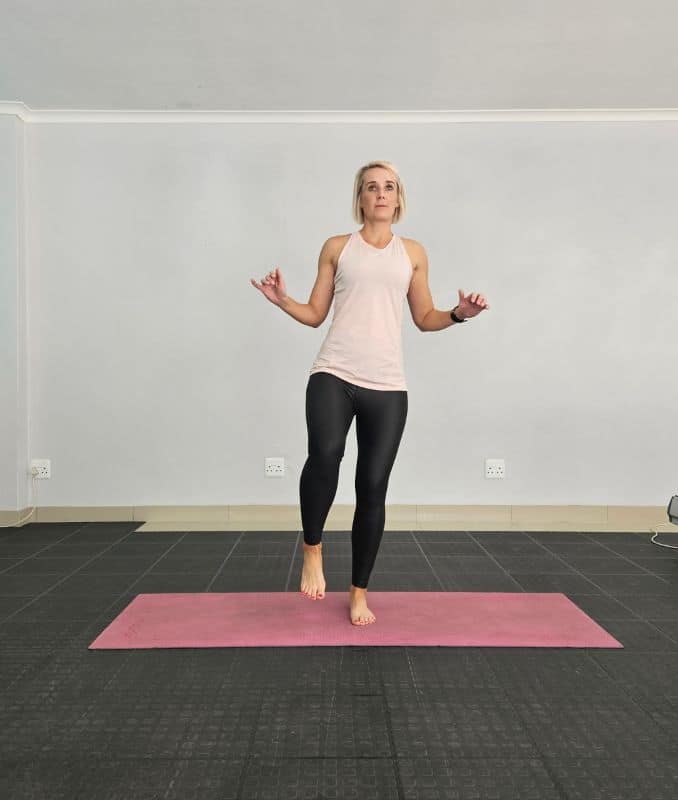
- Begin in an upright standing position with your feet at hip-width apart.
- Engage your core. Shift your weight onto one leg and lift the opposite foot off the ground, maintaining balance on the standing leg.
- Hold this position for several deep belly breaths, in through your nose and out through your mouth.
- Slowly lower the raised foot to the ground and repeat the movement on the opposite leg.
- Make sure to maintain proper alignment of your head, shoulders, and hips throughout the exercise.
3. Standing March
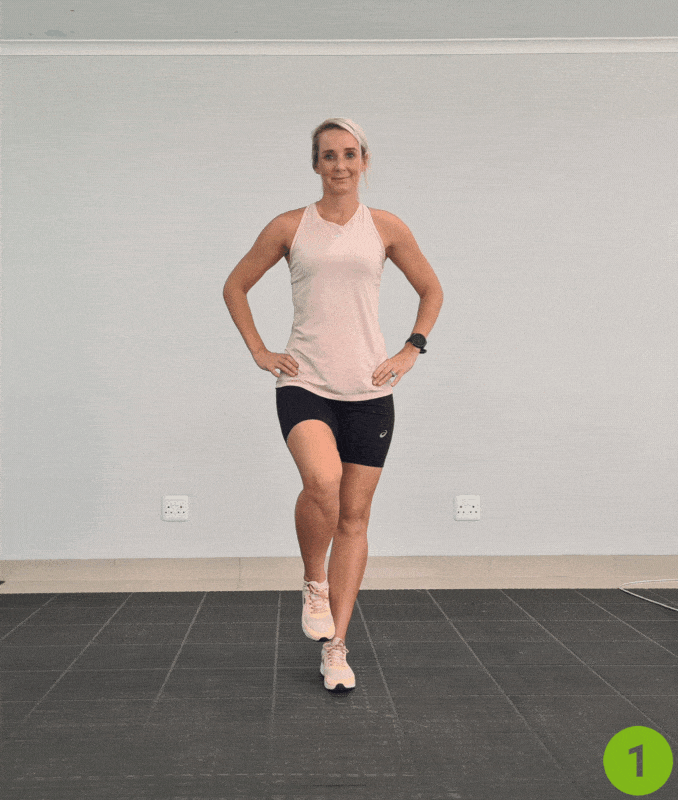
- Begin in an upright standing position with your feet at hip-width apart. Engage your core.
- Lift one knee towards hip height, then lower your leg down to return to the starting position.
- Repeat the movement, alternating legs.
4. Standing Heel Raises
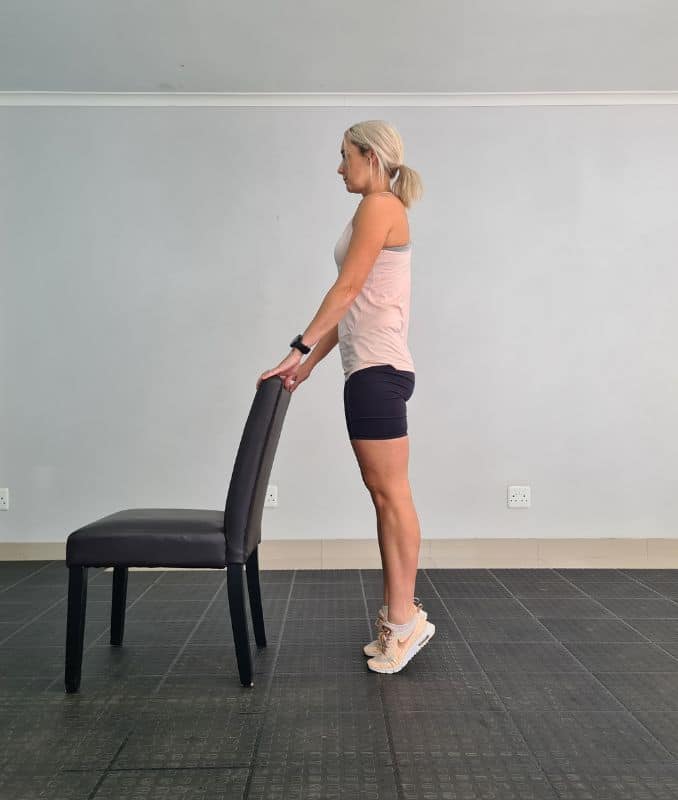
- Begin in an upright standing position with your feet hip-width apart.
- Engage your core. Place your hands lightly on a sturdy object, like a chair or countertop, for support.
- Slowly rise onto the balls of your feet, lifting your heels as high as you comfortably can.
- Hold the position for a moment, then slowly lower your heels back down to the floor.
- Keep your body straight and avoid leaning forward or backward.
- Repeat the movement several times.
5. Deep Squat Stretch

- Begin in an upright standing position with your feet wider than hip-width apart and your toes pointing slightly outward.
- Engage your core, hinge from your hips, and bend your knees to lower your seat downward.
- Keep your knees behind your toes and do not let your knees fall inward.
- Press from your heels to return to the starting position and repeat the movement.
- Hold this position for several deep belly breaths, in through your nose, out through your mouth. Repeat the movement.
6. Bosu Ball Balance
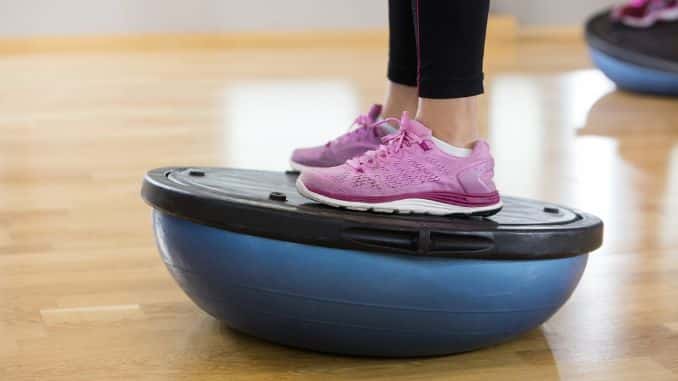
- Begin by standing with both feet on the flat side of the Bosu ball, ensuring your feet are hip-width apart.
- Engage your core for stability. Slowly shift your weight to one leg, while keeping your posture straight and your body aligned.
- Hold this position for a few seconds, focusing on maintaining balance.
- Return to both feet and repeat the process by shifting weight to the opposite leg.
- To increase difficulty, try closing your eyes or adding dynamic movements like small squats.
- Continue for several repetitions.
Fall Prevention Yoga
1. Warrior I
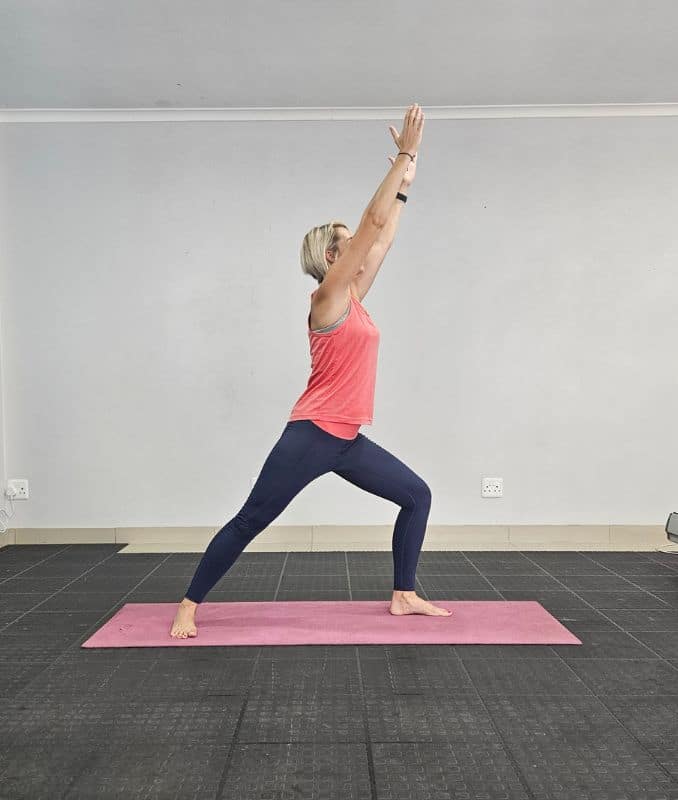
- Begin in an upright standing position with your feet shoulder-width apart.
- Ensure proper alignment with your head, shoulders, hips, and legs throughout.
- Engage your abdominal muscles, then take a big step back with one foot and bend your front knee forward as you raise both arms above your head.
- Hold the position for a couple of breaths.
- Raise back up to the upright standing position using your arm for support.
- Repeat the movement on the opposite side.
2. Warrior II
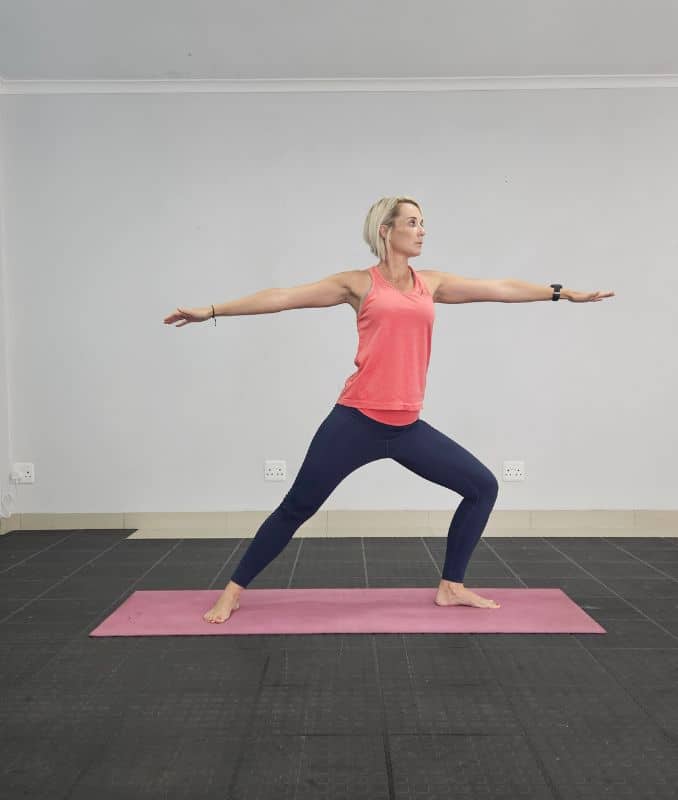
- From the Warrior I pose. Gently turn your upper body to your left side.
- Then, extend your arms out at your sides at shoulder height and pivot your left foot so that your toes are pointing to your left.
- Maintain good alignment of your head, shoulders, and hips.
- After that, drop your shoulders and gaze forward.
- Keep your hips facing forward and your right knee bent.
- And then, adjust the distance of your back foot for comfort and balance, and firmly plant your heels on the mat.
- Hold this position for several seconds and relax.
- Finally, return to the Warrior I pose to repeat the movement on the opposite side.
According to a trial study, balance exercises can significantly improve balance and reduce the risk of falls in older adults. (5)
Conclusion
Practicing balance exercises, especially with eyes closed, strengthens the body’s ability to maintain stability by relying on the vestibular system and proprioception. These exercises, including activities like single-leg stands, heel raises, and Bosu ball balance, enhance coordination, muscle strength, and body awareness, which help reduce the risk of falls.
Regular balance training contributes to improved mobility, better posture, and greater overall health, particularly for older adults aiming to maintain independence and prevent injuries.
Don’t wait until a fall happens—start practicing how to improve balance with eyes closed today with our expert-guided exercises and tools. Try our Balance Training Handbook now!

